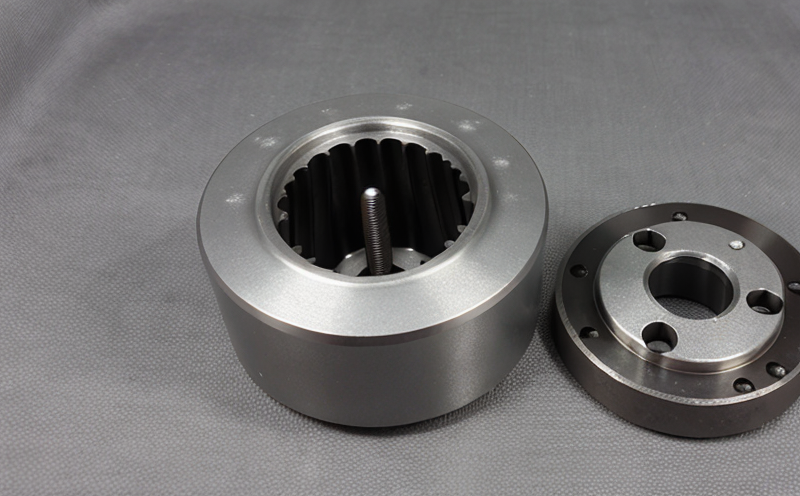ASTM E8 Tensile Testing of Additively Manufactured Metals
The ASTM E8 standard is one of the most widely recognized and used standards in materials testing. This service focuses specifically on the tensile testing of additively manufactured (AM) metals, which are gaining significant traction due to their ability to produce complex geometries with enhanced mechanical properties compared to traditionally manufactured parts.
ASTM E8 specifies a procedure for determining tension tests on metallic materials and is applicable to wrought and cast metals. However, when it comes to additively manufactured metals, the process of AM introduces unique challenges and considerations that must be addressed during testing.
Additive manufacturing involves depositing material in layers through processes like laser melting or electron beam melting. This process can lead to variations in microstructure, residual stresses, and porosity which influence mechanical properties. Therefore, ASTM E8 tensile testing on AM metals requires careful specimen preparation and test setup to ensure accurate and reliable results.
Specimen preparation is critical for obtaining valid tensile test data. The standard specifies that specimens should be machined from the build in a manner that minimizes distortion and ensures homogeneity across the sample. For AM parts, this can involve selecting appropriate locations within the part where testing will provide meaningful insights into the material's properties.
Instrumentation plays a key role in ASTM E8 tensile testing of AM metals. High-precision universal testing machines (UTMs) are used to apply controlled loads and measure elongation accurately. Advanced software solutions allow for real-time data acquisition and analysis, ensuring precision throughout the test process.
The choice of loading rate is another critical factor affecting the outcome of ASTM E8 tensile tests on AM metals. Since AM parts may exhibit varying levels of anisotropy due to their manufacturing processes, it’s important to select a loading rate that best represents real-world applications while also providing sufficient data points for analysis.
Test results from ASTM E8 tensile testing are used extensively in various sectors including aerospace, automotive, and defense industries. These sectors rely on accurate characterization of AM materials before they can be incorporated into critical components like engine parts or structural frames.
In summary, ASTM E8 tensile testing of additively manufactured metals is a crucial step in validating the quality and performance characteristics of these innovative materials. By adhering strictly to this standard’s procedures, laboratories can produce reliable data that helps manufacturers make informed decisions about material selection and process optimization.
Why It Matters
The significance of ASTM E8 tensile testing in the context of additively manufactured metals cannot be overstated. This service ensures compliance with international standards, which is essential for quality control and ensuring product reliability. Compliance with such standards builds trust among stakeholders, including customers, regulators, and investors.
For quality managers and compliance officers, ensuring adherence to ASTM E8 helps maintain high standards of manufacturing and reduces the risk of non-compliance issues. This can lead to improved reputation and reduced costs associated with recalls or rejections.
R&D engineers benefit greatly from this service as it provides them with detailed insights into how different AM processes affect material properties. This information is invaluable for refining existing techniques and developing new ones, thereby advancing the technology further.
From a procurement perspective, sourcing materials that have undergone rigorous ASTM E8 testing ensures that you are getting high-quality products. It also simplifies decision-making by providing clear benchmarks against which suppliers can be evaluated.
In essence, ASTM E8 tensile testing of additively manufactured metals is not just about meeting regulatory requirements; it’s about setting the bar for excellence in material science and manufacturing practices.
Applied Standards
| Standard | Description |
|---|---|
| ASTM E8-18 | This standard provides a detailed procedure for performing tensile tests on metallic materials. It covers specimen preparation, testing procedures, and interpretation of results. |
| ISO 6892-1:2016 | An international standard that specifies the principles and methods for conducting tension tests on metallic materials, including those produced via AM processes. |
| EN 10045-1:2012 | This European standard details requirements for tensile testing of wrought iron products, which can include certain types of AM metals. |
| ASTM E8M-17 | A modified version of the ASTM E8 standard specifically tailored towards metallic materials produced using additive manufacturing techniques. |
The application of these standards ensures that testing procedures are consistent and reproducible, leading to accurate and reliable test results. By adhering to these internationally recognized guidelines, laboratories can provide confidence in the quality of their services.
Scope and Methodology
Tensile testing according to ASTM E8 involves subjecting a specimen to gradually increasing tensile load until failure occurs. The test measures both the maximum stress (tensile strength) and elongation at fracture, providing valuable information about the mechanical behavior of metals under tension.
For additively manufactured metals, the process begins with careful selection of appropriate locations for sample preparation based on the specific AM technique used. Once prepared, these specimens undergo rigorous inspection to ensure they meet all necessary criteria set out in ASTM E8 before being loaded into a testing machine.
The loading rate is carefully controlled throughout the test to avoid premature failure or excessive elongation that could skew results. Real-time monitoring of load and displacement allows for precise recording of data points, which are then analyzed using specialized software tools provided by modern UTM systems.
After completing the test, detailed reports summarizing all relevant parameters including tensile strength, yield strength, modulus of elasticity, and percent elongation are generated. These reports serve as important documentation not only for internal quality assurance purposes but also for external audits or regulatory submissions where required.
This comprehensive approach ensures that every aspect of ASTM E8 tensile testing on additively manufactured metals is covered meticulously. It guarantees accurate assessment of material properties, supporting informed decisions regarding design modifications and process improvements.





